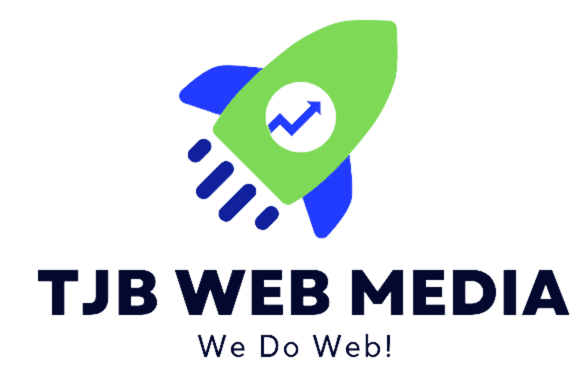Search engine optimization (SEO) has become an essential strategy for any business looking to gain visibility online. At TJB WebMedia, we’ve seen firsthand how effective SEO can transform a website’s performance—but only when it’s built on data that actually matters. The digital space is overflowing with tools and dashboards that provide SEO metrics. But which of these metrics are really worth your attention? Which ones actually correlate with better search engine rankings, more traffic, and—most importantly—higher conversion rates? Let’s break down the SEO metrics that really matter and how to use them to optimize your digital presence.
Key SEO Metrics
1. Organic Traffic: The Foundation of SEO Success
Organic traffic refers to the visitors who land on your website from unpaid search results. This is often the clearest indicator that your SEO efforts are working.
-
Why it matters: More organic traffic typically means more visibility on search engines like Google or Bing.
-
How to track it: Use Google Analytics or tools like SEMrush and Ahrefs to monitor how much of your traffic is coming from organic search.
But here’s the key: don’t just focus on volume. Look at quality. Are these visitors staying on your site, exploring multiple pages, and converting? That leads us to the next important metric.
2. Bounce Rate & Dwell Time: Engagement Tells a Story
SEO isn’t just about getting clicks—it’s about keeping people on your site.
-
Bounce rate measures the percentage of visitors who leave your website after viewing only one page.
-
Dwell time refers to how long a visitor stays on a page before returning to search results.
High bounce rates and low dwell times may indicate that your content isn’t relevant, engaging, or useful.
-
Pro Tip: Google doesn’t use bounce rate directly in ranking, but it does prioritize content that satisfies user intent. That’s why engagement metrics are so valuable to monitor.
3. Keyword Rankings: Position Isn’t Everything
Keyword rankings track where your pages appear in search engine results for specific search queries.
-
Why it matters: Tracking keyword movement helps you measure the effectiveness of your SEO strategy.
-
What to focus on: It’s not just about being #1. Instead, track keyword rankings alongside click-through rate (CTR) and conversion data to get a fuller picture.
Also, aim for a diverse mix of keywords:
-
Short-tail (broad)
-
Long-tail (specific, intent-driven)
At TJB WebMedia, we often target long-tail keywords that better match user intent and typically convert at higher rates.
4. Click-Through Rate (CTR): Is Your Content Irresistible?
Click-through rate is the percentage of people who see your page in the search results and actually click on it.
-
Why it matters: A high CTR means your page title and meta description are compelling and relevant.
-
How to improve it: Write clear, enticing meta titles and descriptions that include target keywords but also appeal to real people.
Google Search Console is your best friend here. It provides detailed reports showing which search queries trigger your site, your position, impressions, and how often people click.
 5. Page Load Speed: User Experience is SEO
5. Page Load Speed: User Experience is SEO
Google has repeatedly confirmed that page speed is a ranking factor—especially on mobile.
-
Why it matters: A slow site kills your chances of converting visitors, increases bounce rates, and lowers engagement.
-
Tools to use: Google PageSpeed Insights, GTmetrix, and Lighthouse are great tools to test and optimize your speed.
At TJB WebMedia, we help clients reduce load times by compressing images, optimizing code, and leveraging efficient web hosting.
6. Backlinks: Quality Over Quantity
Backlinks—links from other websites to your own—are one of the strongest indicators of a site’s authority in Google’s eyes, and one of the key SEO metrics to focus on.
-
Why it matters: A backlink from a high-authority domain can significantly boost your rankings.
-
What to focus on: Relevance and authority. A single link from an industry-relevant, high-DA (domain authority) site is worth more than 100 low-quality links.
Avoid spammy backlink tactics. Google penalties are real and can be hard to recover from.
7. Core Web Vitals: Google’s UX Checkpoints
Google introduced Core Web Vitals to better assess the quality of a user’s experience. These include:
-
Largest Contentful Paint (LCP) – How fast a page loads
-
First Input Delay (FID) – How quickly a page becomes interactive
-
Cumulative Layout Shift (CLS) – Visual stability during page load
You can get these SEO metrics with Google Search Console or PageSpeed Insights.
At TJB WebMedia, we’ve made Core Web Vitals a part of our ongoing SEO optimization process for clients.
8. Conversions: The End Game
At the end of the day, SEO isn’t just about traffic, rankings, or page speed—it’s about achieving your business goals.
Track:
-
Leads generated
-
Form submissions
-
Phone calls
-
Ecommerce sales
-
Newsletter sign-ups
Use Google Analytics’ Goals or Tag Manager to track these conversions and tie them back to specific traffic sources or keywords.
Bonus: Don’t Chase Vanity Metrics
It’s tempting to get caught up in flashy metrics like:
-
Number of pageviews
-
Social shares
-
Domain authority (DA)
While these can be useful in context, they don’t tell the full story. Focus instead on the metrics that directly impact your business growth and search engine visibility.
SEO Metrics that Move the Needle
Understanding SEO metrics isn’t about tracking everything—it’s about tracking the right things. At TJB WebMedia, we believe in a data-driven approach that prioritizes what actually helps your website grow:
-
Attracting the right audience
-
Keeping them engaged
-
Driving conversions
When you focus on meaningful SEO metrics like organic traffic, keyword performance, engagement, speed, and conversions, you’re building a solid foundation for long-term success.
Need help decoding your SEO data? Reach out to the team at TJB WebMedia—we’ll help you cut through the noise and focus on what really moves the needle.
Related NJ SEO Posts:
How Long Does SEO Take to Show Results?
NJ Online Reputation Management Services
Pay Per Click Management Company
XML Sitemap: Why It’s Crucial for SEO
Guide to Creating an Effective SEO Blog Post
Building Inbound Links to Improve SEO

